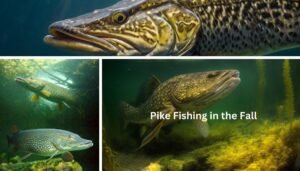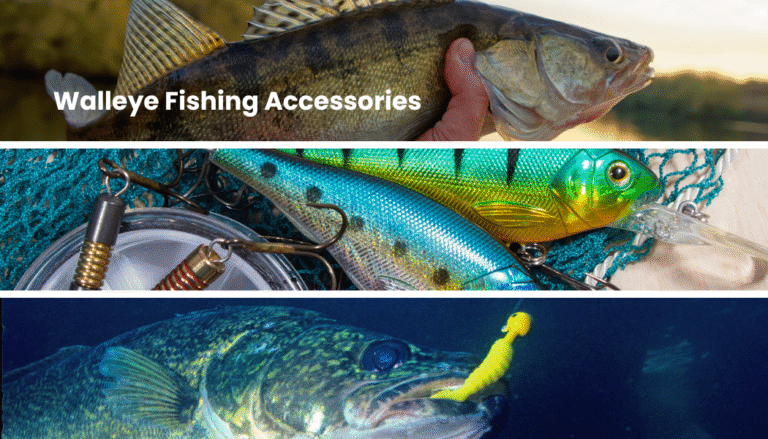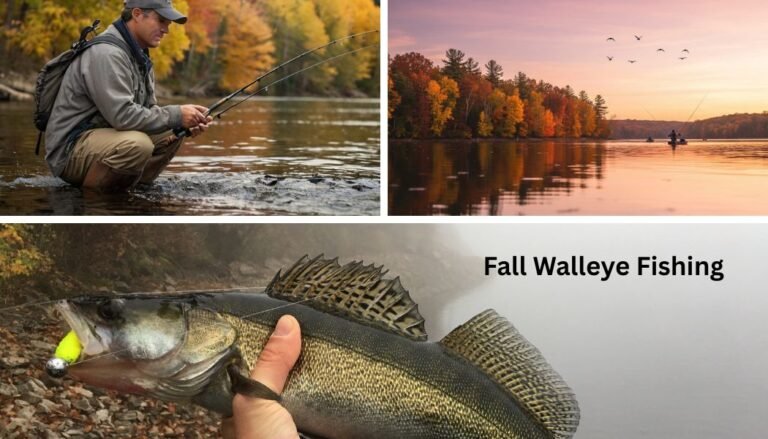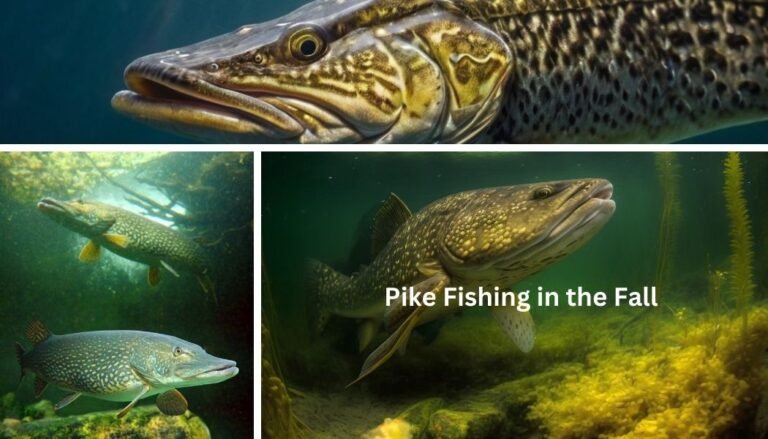Why Fall Pike Fishing is Every Angler’s Dream Season
Fall isn’t just a season of crisp mornings and vibrant leaves; it’s prime time for catching big, aggressive pike. As the water cools, these apex predators move to shallower zones, feeding heavily to prepare for winter. I’ve spent countless autumn days chasing northern pike, and I’ve seen firsthand how the right approach can turn an average day into a trophy catch. Did you know that pike metabolism peaks in cooler water, making them more active than during the heat of summer? In this guide, I’ll share proven strategies, gear recommendations, and insider tactics so you can make the most of pike fishing in the fall.
Why Fall is the Best Season for Pike Fishing
Seasonal behavior changes of northern pike
I’ll be honest, my first few falls chasing northern pike were a mess. I used to think they behaved the same year-round, so I’d drag the same lures and wonder why I went home empty-handed. It wasn’t until I started paying attention to seasonal patterns, like how pike move out of weedy back bays and set up near drop-offs, that things finally clicked.
In early fall, I noticed they’d hang around weed edges where baitfish were still lingering. But by mid to late fall, they shifted deeper, chasing schools of perch and suckers stacking up near rocky points. I remember one cold October morning when I cast a big spinnerbait along a deep edge out of sheer desperation… and bam, hooked into a 38-inch fish that nearly ripped the rod from my hands.
How water temperature affects feeding activity
Water temps are everything in fall pike fishing. When surface temps start dropping into the low 60s and eventually the 50s °F, these predators go on what I can only call a feeding bender. I learned this the hard way one year when I fished a lake in late September during an unseasonably warm spell, barely a follow, not even a sniff. The next weekend, after a cold front, the same spots came alive. Pike don’t like blazing-hot water, and in the fall, the cooler temps trigger them to bulk up before winter.
A cheap handheld thermometer became one of my best investments. I started logging water temps and quickly saw patterns: pike activity spiked as temps slid into that magical 55-60 °F window. If the water was still too warm, I’d focus on shaded bays in the mornings. Once it cooled, mid-day bites turned red-hot.
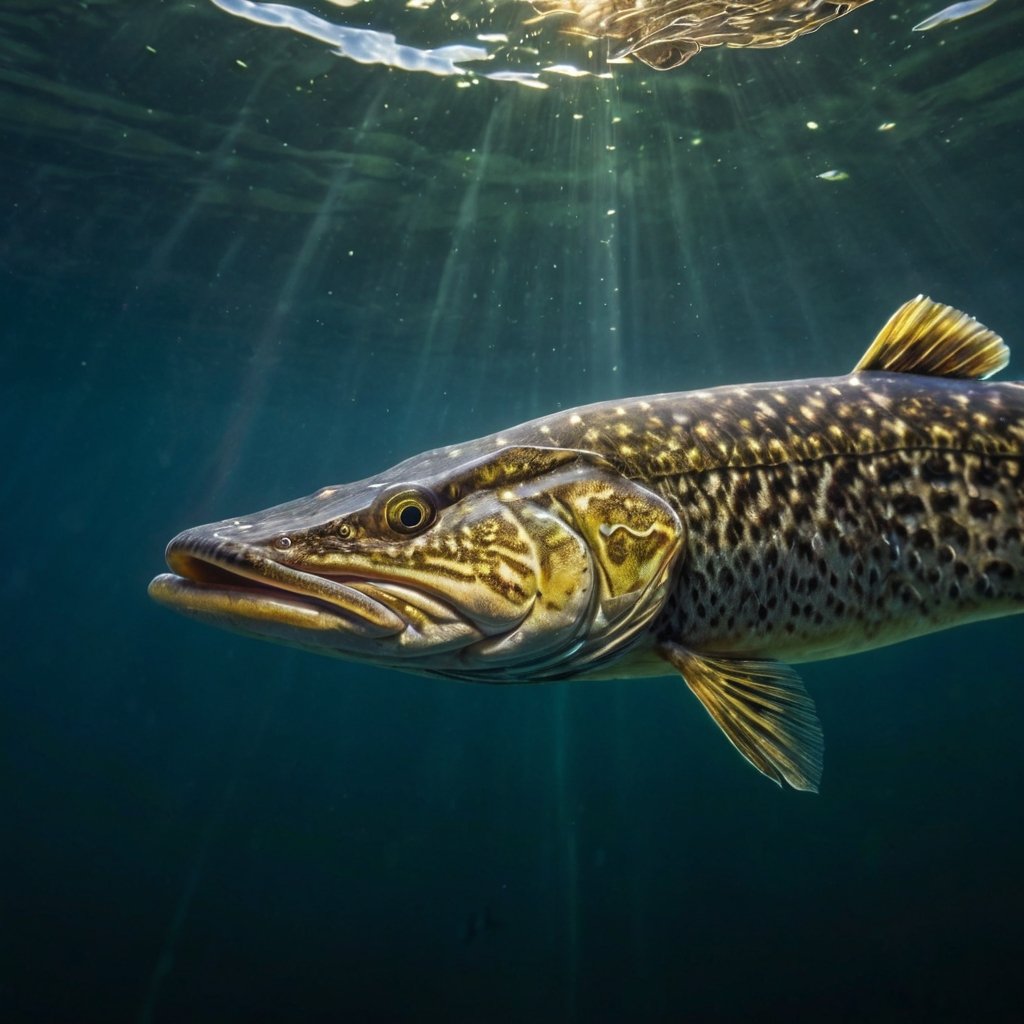
Increased opportunities for trophy-sized fish
Fall is straight-up prime time for giants. Summer fishing gave me plenty of hammer-handles, but in October? That’s when the big girls show up. They’re building fat reserves, and they’ll crush big baits without hesitation. I switched from small spoons to 8-10 inch jerkbaits and soft plastics, and my average size jumped dramatically. One late afternoon, I stuck a 42-inch pike on a swimbait so big it looked ridiculous in the tackle shop, but out on the water, that thing got inhaled like candy.
Comparing fall vs. summer pike patterns
In summer, I’d spend half my day digging hooks out of slimy two-footers in shallow weeds. Fun, but predictable. Fall flipped the script. Weed growth dies back, baitfish migrate, and pike follow deeper structure like underwater humps and rocky shelves. You can cover more water with trolling or casting big crankbaits rather than picking apart lily pads. It’s less about hiding and more about hunting.
I stopped wasting time in knee-deep water and focused on 10-20 foot breaks, where I marked big arcs on sonar. Sure, some days I still get skunked, and fall weather can be brutal; however, the payoff was consistent quality over quantity. And honestly, I’ll take one 40-incher over ten runts any day.
Locating Pike in Autumn Waters
Identifying shallow weed beds and drop-offs
Back when I first started fall pike fishing, I stubbornly stayed in the thick weeds all season. I figured if pike loved the cabbage beds in July, they’d still be there in October. Wrong. By mid-fall, most shallow weeds die off, sucking the oxygen out of those areas and pushing baitfish and pike toward healthier weed lines or deeper edges.
Now, when I hit a new lake, I spend the first hour just scouting with my electronics and polarized glasses. Healthy green weed beds in 6–10 feet of water are money early in the fall. Once those weeds brown out, I shift to drop-offs nearby, where pike stage like ambush predators. I still remember fishing a lake in northern Minnesota where every decent fish came off a sharp break dropping from 8 feet to 18 feet, textbook transition zone.
Transition zones between deep and shallow water
Pike are edge huggers in autumn. I’ve seen them sit right on the line between shallow flats and deep basins, waiting to crush anything that swims by. One day on Lake Vermilion, I trolled a big crankbait along a contour line at 12 feet, and it was lights-out for three hours. The key was running baits parallel to those edges instead of zigzagging across them.
I’ve also noticed that wind-blown transition zones are even better. If you’ve got a rocky point or sandbar with deep water nearby and wind pushing baitfish into it, that’s practically a dinner bell. I’ll anchor upwind and cast big jerkbaits or swimbaits right along the contour.
The role of baitfish movement in fall
Follow the food, find the fish, sounds obvious, but it took me years to really trust it. In fall, schools of perch, ciscoes, and suckers move out of the back bays and start grouping up in open water or near points. Pike shadow them like wolves. I learned this lesson when I was stubbornly pounding shoreline cover with no luck, only to graph huge bait balls in 20 feet. Dropping a big spoon down there turned my slow day into a three-fish afternoon, including one over 40 inches.
I don’t just rely on sonar, though. Gulls diving? That’s free intel. If I see birds crashing on bait, I’ll troll or cast through that area even if it looks “too open.” Nine times out of ten, there’s a pike lurking beneath the chaos.
How weather fronts impact pike location
This part used to drive me nuts. Cold fronts can either light up the bite or shut it down. I’ve had mornings where a falling barometer made the pike go ballistic, and afternoons where a sudden high-pressure system locked their jaws tight. When the weather’s unstable, I’ve noticed they slide deeper and hold tight to structure, becoming less aggressive.
One trick I use on post-frontal days is slowing everything down, long pauses on jerkbaits, vertical jigging with big soft plastics instead of fast trolling. On the flip side, if a warm front pushes through, I’ll hit shallower breaks and speed up my retrieve to match their burst of activity. Logging conditions over multiple trips taught me these patterns; now I don’t panic when the weather flips, I just adjust where and how I fish.
Best Gear for Fall Pike Fishing
Rod and reel setups for heavy lures and big fish
I used to throw pike lures on whatever bass rod I had lying around, big mistake. The first time a 15-pounder crushed my jerkbait, the rod tip folded like a wet noodle, and I couldn’t get a solid hookset. After that embarrassing loss, I switched to a 7’6” medium-heavy or heavy-power rod with a fast action. That extra backbone drives hooks home on big baits, and the longer rod gives better casting distance when I’m working shorelines or trolling contour breaks.
As for reels, I run a high-capacity baitcaster with a strong drag system, usually in the 6:1 to 7:1 gear ratio range. It picks up line quick enough for burning spinnerbaits but still has the torque for slow-rolling swimbaits. Spinning reels work, too, but I’ve burned out a few cheap reels fighting 40-inch pike; lesson learned: spend a little more on quality here.
Recommended fishing line and leader materials
If you’re still fishing for pike with straight mono, I salute your bravery, but I wouldn’t risk it. I switched to 50–65 lb braided line years ago, and I’ve never looked back. The zero stretch lets me feel every bump, and it rips through dying weeds in the fall like butter.
Leaders are non-negotiable. I’ve had pike slice through 20 lb fluoro like it was dental floss. These days, I use a steel leader, or 60–80 lb fluorocarbon when I want something stealthier in clear water. I actually keep both in my tackle bag because conditions can change fast. Some people swear by 12-inch titanium leaders (pricey, but they don’t kink).
Must-have tackle boxes for fall
I carry fewer boxes now but pack them smarter. Fall pike are all about big profiles, so my box is full of 8–10 inch jerkbaits, oversized spinnerbaits, heavy spoons, and soft plastic swimbaits. I ditched the tiny stuff after realizing I was wasting time on hammer-handles.
One fall trip, I organized my lures by depth: shallow divers, mid-depth cranks, and heavy trolling baits, so I could switch quickly without digging around. Sounds obvious, but it saved me hours over the course of a week of fishing. A waterproof tackle box with rust-resistant trays is worth every penny when cold rain hits mid-day.
Essential tools: pliers, nets, and fish grips
Big pike are toothy and not shy about letting you know it. Early on, I tried unhooking a 36-inch fish bare-handed; I still have a scar to remind me of that genius move. Now I never fish without long-nose pliers, a jaw spreader, and a good pair of fish grips.
A rubber-coated landing net is also a must. Those cheap nylon nets tangle trebles so bad you’ll lose five minutes untangling every fish. I use a deep-bag net that can cradle a trophy pike while I unhook it safely. It’s better for catch-and-release, and frankly, it saves my fingers.
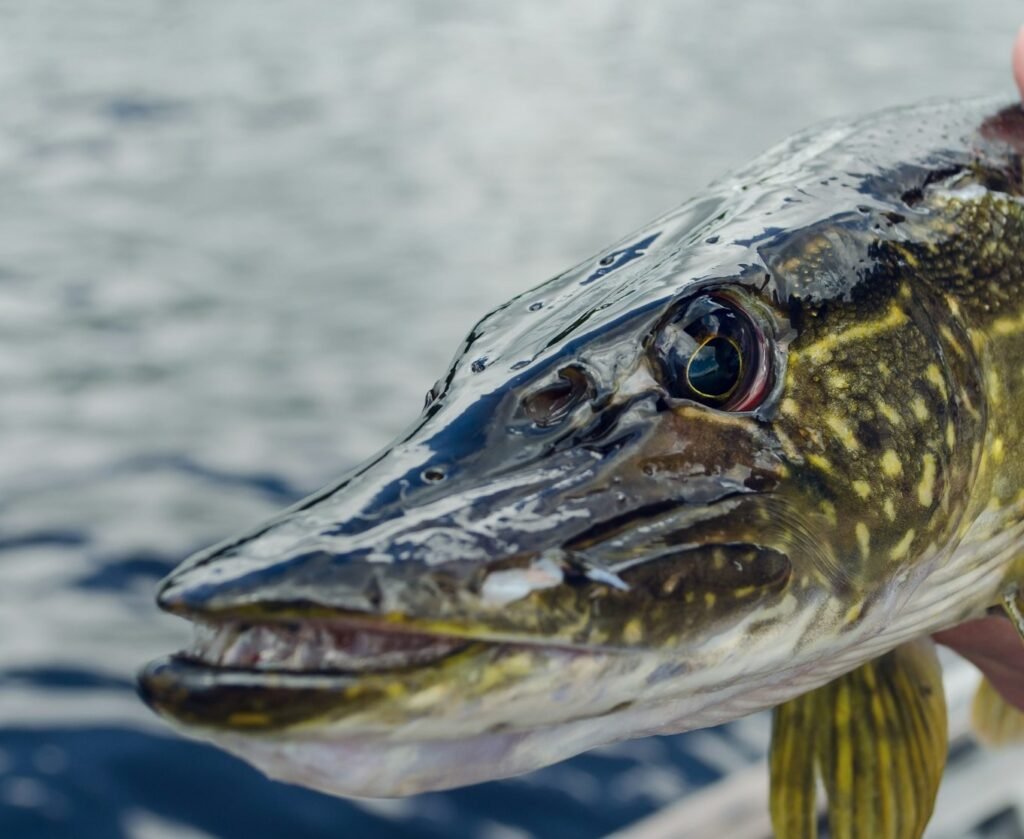
Top Lures and Baits for Fall Pike
Jerkbaits, crankbaits, and spinnerbaits that excel in cooler water
When water temps slide into the 50s, I ditch my finesse gear and go all-in on big reaction baits. A 9-inch suspending jerkbait has saved me more than once on tough days. There’s something about that pause-and-twitch action that makes a cold-water pike lose its mind. I still laugh thinking about the time I counted to ten on a long pause (mostly because I was distracted digging in my tackle bag) and got slammed by a 39-inch fish right as I reached for my coffee.
Deep-diving crankbaits are another fall staple. I run them along 12- to 18-foot breaks when baitfish are hanging deeper. Big single-blade spinnerbaits still work, especially slow-rolled over healthy weed clumps in early fall, but by late season, I’m usually downsizing to heavier heads so I can keep them deeper without burning them in too fast.
Color patterns that trigger strikes in low light
Fall weather means cloudy skies and shorter days, and pike seem to love gaudy colors when light is low. Firetiger patterns, bright chartreuse, and orange belly baits have put more fish in my net than anything “natural.” In clear water, I’ll still throw perch or gold patterns, but if the lake’s stained or the sun’s hiding, I go bold.
I learned this lesson after an entire morning of strikes on a clown-pattern jerkbait while my buddy stubbornly threw a silver minnow-lookalike. He got skunked; I went home with sore arms. Moral of the story: when in doubt, don’t be subtle.
When to use live bait vs. artificial lures
I mostly fish with artificial because it’s faster to cover water, but there are days when live bait flat-out wins. Big quick-strike rigs with dead suckers under a slip bobber have produced some absolute tanks for me when the bite slowed down. In late October, when pike get lethargic, a well-placed sucker hanging near a drop-off can out-fish a $30 jerkbait all day.
One November trip, I froze my fingers babysitting a sucker rig. The bait rig caught both of my biggest fish that weekend, a humbling reminder not to get too cocky about “always moving baits.”
Presentation techniques for maximum action
This is where I used to mess up. I’d fish my fall lures like it was still July, steady retrieves, no variation. Pike in cold water love pauses and directional changes. With jerkbaits, I use long sweeps of the rod, then let it sit motionless for what feels like forever. Spinnerbaits get slow-rolled so the blades thump without racing.
Trolling big crankbaits works too, but I constantly change speed; sometimes I even pop the rod forward to make the lure jump. That little surge triggers reaction strikes when pike are following but not committing. Logging these details after each trip taught me that cadence often matters more than the lure itself.
Proven Techniques to Catch More Pike
Casting vs. trolling in fall conditions
I used to be a die-hard caster, thought trolling was just “lazy fishing.” Then I fished a massive Canadian shield lake in October, where pike were holding over 20-foot humps. After two hours of casting with nothing to show, I finally gave in and started trolling a deep crankbait at 3 mph. Five minutes later, the rod doubled over with a 40-inch fish. Lesson learned: fall pike often spread out, and trolling covers water fast.
That said, casting is still my go-to when I’m working defined structure, weed edges, rocky points, or small bays. I can pick spots apart, change angles, and control the presentation better. These days, I do a mix: troll to locate fish, then stop and cast when I get a hit or mark bait on sonar.
Varying retrieve speed to match pike mood
This one took me years to figure out. Fall pike aren’t always in attack mode, and burning a spinnerbait at summer speed will sometimes just push them off. If the water’s cold and the fish feel sluggish, I slow-roll baits so they thump just above bottom. When they’re aggressive, usually right before a front, I’ll rip jerkbaits fast with only short pauses.
I once fished back-to-back days on the same lake: day one, a slow, lazy retrieve crushed them; day two, only fast, erratic twitches worked. If you’re not getting bites, don’t switch lures right away. First, try changing how you fish the lure that you’ve got.
Working structure and cover effectively
Pike in fall love edges, but you can’t just bomb casts blindly. I’ve had better luck mapping out every weed line, break, and rock pile with sonar first. When I know exactly where the drop-off starts, I’ll cast parallel instead of across it, which keeps the lure in the strike zone longer.
Covering both shallow and deep sides of the same structure is also key. Early in the fall, I’ll work the inside weed edge with spinnerbaits. By late fall, I’m sitting on the deep side, throwing big crankbaits or jigging soft plastics down the break. Being stubborn about one depth has cost me more fish than I’d like to admit.
Tips for hook setting and landing large fish safely
I used to lose way too many fish at boatside. Fall pike are heavy hitters, but their bony mouths mean you’ve got to drive the hooks home. With braid and a fast-action rod, a quick, firm sweep works better than a giant “bass-style” hookset. If I see a follow, I’ll speed up the bait slightly to trigger the strike, then hit them hard once I feel weight.
Landing big pike safely is a whole different game. A deep rubber net lets the fish stay in the water while I unhook it, and I always keep long pliers ready. I learned (the bloody way) never to lip-grab a pike like a bass. They have many sharp teeth, which is why they are known as slough sharks in some parts of North America. A jaw spreader and needle-nose pliers will keep your fingers intact, and they make releasing a trophy way easier on the fish, too.
Safety and Conservation Tips
Handling pike to avoid injury (to fish and angler)
Big pike are no joke when it comes to teeth and head shakes. The first time I tried unhooking one without tools, I wound up bleeding all over my boat carpet, not my proudest moment. Now I use needle-nose pliers and a jaw spreader every single time. I cradle the fish horizontally with wet hands to protect its slime coat rather than hanging it vertically. This keeps both me and the pike out of trouble.
One habit that really helps is keeping the fish in the net, in the water, while I get everything ready. Less flopping on the deck means fewer bent hooks and fewer close calls for my fingers.
Catch and release best practices
I release most of my fall pike now, especially the big ones. These fish are top predators and slow growers; letting them go keeps the lake healthy. Quick photos are fine, but I prep my camera in advance so the fish spends minimal time out of water. If you can, revive them by holding them gently in the current until they kick off on their own rather than just tossing them back.
I remember one trophy fish that took almost two minutes to swim away after release. That was a wake-up call; cold water slows their recovery, so patience is key.
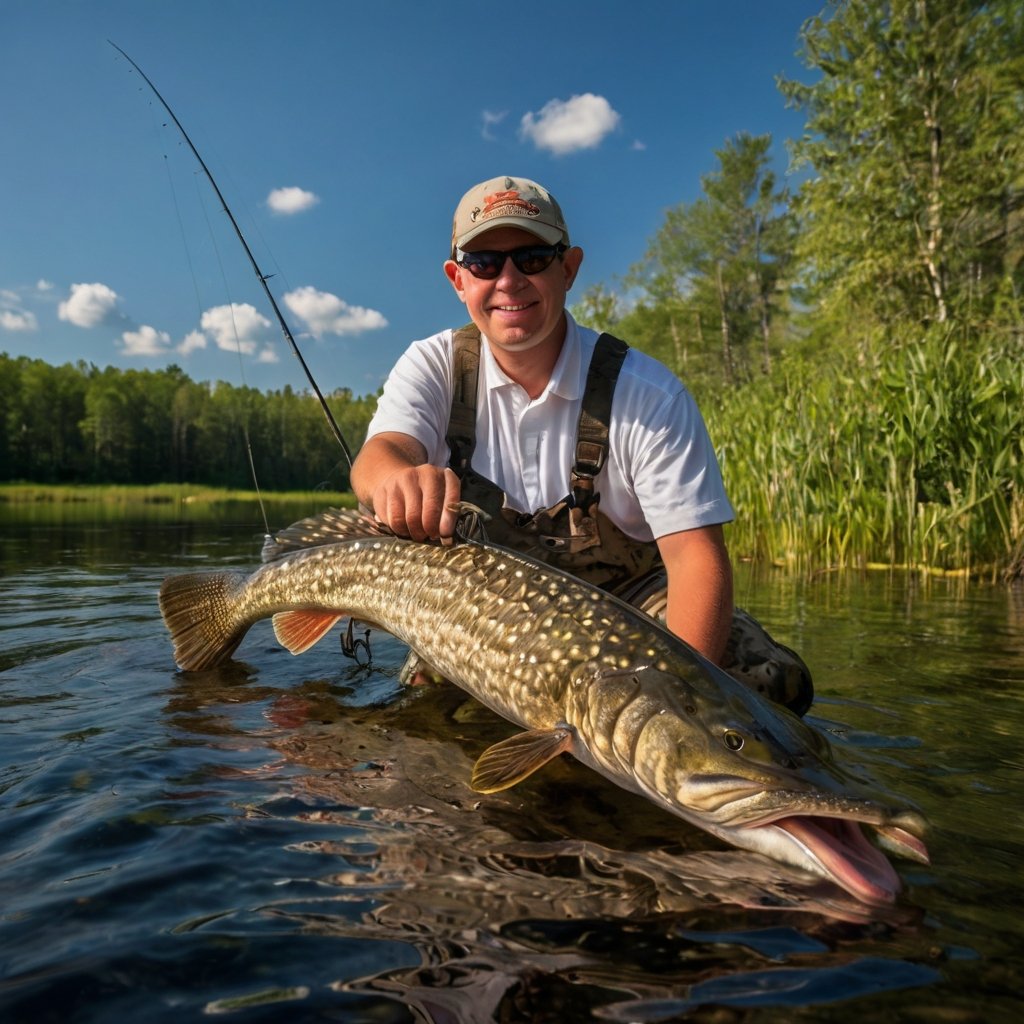
Using barbless hooks to minimize harm
A buddy convinced me to switch to barbless hooks a few years ago, and honestly, I was skeptical. I figured I’d lose fish left and right. Turns out, if you keep steady pressure, barbless hooks hold just fine, and they come out of both fish and thumbs way easier.
This small change sped up unhooking time dramatically. It’s especially handy in the fall when pike inhale baits deep and you don’t want to spend five minutes wrestling trebles out of their gills.
Staying warm, dry, and safe on fall waters
Fall fishing can get brutal fast, cold rain, high winds, and even early snow. I’ve been caught miles from the launch with numb fingers, trying to tie on a lure I couldn’t even see straight. Now I always layer up with waterproof outerwear, pack extra gloves, and keep a thermos of coffee or soup in the boat.
Wearing a life jacket is non-negotiable for me. Cold water robs strength quick, and I’ve seen how fast things go wrong. One October, I saw someone who slipped off a dock, and we got him out fast, but the shock nearly floored him. Since then, I keep an emergency dry bag with spare clothes onboard too.
Best Fall Pike Fishing Destinations
Lakes and rivers known for trophy pike
Some of the biggest pike I’ve ever seen came out of waters I almost skipped. I used to think only the remote, fly-in lakes held monsters, but I’ve caught 40-inch fish just a few hours from home. Bodies of water with healthy forage, like perch, suckers, or ciscoes, almost always produce quality pike.
One standout for me was Lake of the Woods in Ontario. I trolled a rocky shoreline in late September and landed a fish so fat I could barely get both hands around it. On rivers, I’ve had great luck on the side channels during fall drawdowns, where pike stack up to feed on stranded baitfish.
Regional hotspots in North America and Europe
In North America, Minnesota, Wisconsin, and northern Michigan are loaded with underrated pike lakes, and most people chase muskies, which leaves the pike bite wide open. In Canada, Saskatchewan and Manitoba hold absolute giants; I’ve had days there where 20-pound fish felt “average.”
Friends of mine swear by Sweden and Finland in Europe, especially around the Baltic coast. I haven’t fished there myself yet (still on my bucket list), but they say the shallow archipelagos hold huge fall pike that crush jerkbaits in cold, clear water. Scotland’s lochs are another sleeper destination, if you don’t mind battling some wild weather.
How to research and choose a productive location
I used to just pick lakes by looking at Google Maps, a terrible strategy. Now I start by checking stocking and survey reports from local fisheries agencies. If I see healthy populations of baitfish and good weed growth, that’s a big green flag.
I also read fishing forums (with a grain of salt, anglers love to exaggerate) and watch YouTube videos from locals. Satellite maps help, too; you can spot cabbage beds, rocky points, and creek inlets where pike stage in fall. On rivers, I look for slower side channels and back eddies near current seams.
Local regulations to check before fishing
Nothing kills a fishing trip faster than showing up to find out you’re in a closed season or need a special permit. I learned that the hard way on a trip to northern Alberta, drove eight hours, only to discover the lake had a slot limit I didn’t know about. We ended up releasing fish we could have kept, which was fine, but I wish I’d done my homework first.
Now I always check harvest limits, size restrictions, and bait regulations. Some provinces and states ban live bait in certain waters to prevent invasive species. Others require barbless hooks or single hooks only. It’s a pain to read through the rulebooks, but it saves a lot of trouble (and fines or licence suspensions).
Making the Most of Fall Pike Fishing
Pike fishing in the fall offers unbeatable action, with big fish feeding aggressively in predictable areas. By combining the right location, gear, and techniques, you can maximize your success and enjoy some of the best freshwater fishing of the year. Whether you’re casting flashy lures into weed beds or trolling along drop-offs, autumn gives every angler a chance at a trophy. So gear up, get out there, and experience why fall is truly prime time for pike.
FAQ Section
What is the best time of day to catch pike in the fall?
Early morning and late afternoon are often the most productive times, as pike become more active in lower light and cooler water conditions.
What water temperatures are ideal for fall pike fishing?
Pike feed aggressively when water temperatures drop to the 50–60°F (10–15°C) range, which typically occurs in early to mid-fall.
Do I need special gear to fish for pike in autumn?
A medium-heavy to heavy rod, strong reel, braided line, and a steel or fluorocarbon leader are recommended to handle sharp teeth and heavy strikes.
What lures work best for pike during the fall?
Jerkbaits, crankbaits, spinnerbaits, and large soft plastics are highly effective because they mimic baitfish moving into shallower water.
Is fall a good time to catch trophy-sized pike?
Fall is one of the best seasons to target trophy pike, because they feed heavily to build energy reserves for winter.
Disclaimer: This blog post contains affiliate links

